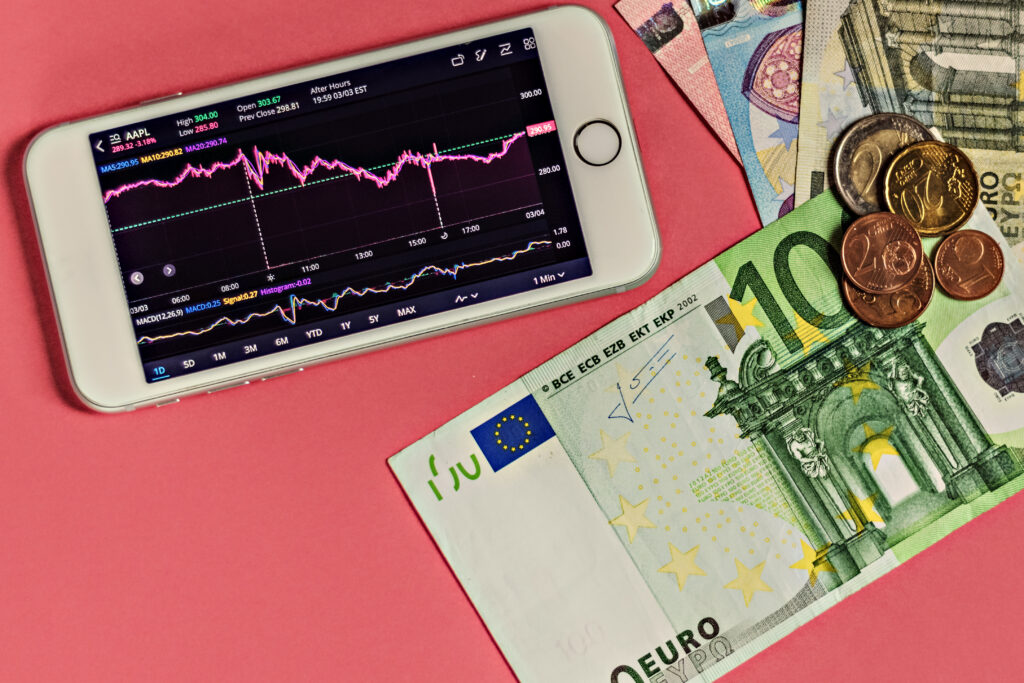Introduction to Digital Detox
In today’s hyper-connected world, digital devices shape how we work, communicate, and live. From smartphones to laptops, technology has become an inseparable part of daily routines. Yet, this constant connectivity comes at a cost, fuelling stress, distraction, and declining mental well-being. In response, a growing counter-trend has emerged—the global digital detox movement.
A digital detox is a conscious decision to step away from electronic devices for a specific period. It means switching off from social media updates, work emails, and endless notifications to restore focus, reduce anxiety, and regain control over personal time. What began as a lifestyle choice for health and wellness has now evolved into a movement with far-reaching effects, influencing consumer preferences, market dynamics, and even global financial systems.
The essence of digital detox lies in challenging the culture of “always online”. By choosing mindful disconnection, individuals prioritise real experiences over digital noise. This shift fuels demand for wellness retreats, eco-conscious products, and services that promote mindfulness, opening new avenues for industries like travel, hospitality, and lifestyle brands. Conversely, businesses resistant to this change risk losing relevance in a market where conscious consumption is gaining strength.
For the tech sector, digital detox signals both a challenge and an opportunity. With rising scrutiny around privacy, data use, and overconsumption, companies that embrace digital wellness and design user-friendly, mindful solutions may gain stronger investor confidence. On the other hand, those tied too closely to addictive digital habits may face resistance in both consumer trust and stock performance.
Even financial markets, including forex, reflect this trend. Shifts in consumer spending and tech stock performance ripple into currency movements, making digital detox not just a personal wellness choice but a factor shaping broader economic narratives.
Consumer Behaviour Shifts
The digital detox movement is reshaping consumer behaviour in profound and far-reaching ways. As people strive to reduce reliance on digital devices, they are not only limiting screen time but also rethinking what truly matters in daily life. This change has transformed spending habits, with individuals increasingly prioritising experiences, sustainability, and meaningful interactions over material possessions.
One of the most striking shifts is the growing preference for experiences. Surrounded by constant digital noise, consumers are actively seeking genuine connections and memorable moments. Industries such as travel, hospitality, and wellness are seeing rising demand for retreats, adventure tourism, and nature-based vacations. Instead of buying the latest gadgets, many now invest in unplugged getaways, wellness spas, or activities that allow them to recharge and live in the present.
This change creates strong opportunities for businesses that cater to experiential needs. By offering digital-free packages, mindfulness retreats, or eco-friendly outdoor adventures, companies can attract a loyal customer base and stand out in competitive markets.
Alongside experiences, sustainability has become a central driver of consumer choice. As awareness of environmental challenges grows, people are increasingly drawn to brands that reflect values of eco-consciousness and ethical responsibility. From recycled materials to carbon-neutral operations, businesses that prioritise transparency and sustainable practices gain both trust and long-term loyalty.
On the other hand, companies that fail to adapt risk losing relevance. In today’s marketplace, sustainability is no longer optional—it is a decisive factor influencing consumer purchasing decisions.
In short, the digital detox movement is pushing consumers toward more intentional choices. By favouring experiences and sustainability, they are reshaping industries and compelling businesses to innovate, evolve, and align with conscious consumption.
Tech Industry Stocks
The digital detox movement creates a paradox for the tech industry—introducing both risks and opportunities that could reshape digital innovation. As awareness of screen overuse grows, companies must adapt to shifting consumer expectations while also contending with increasing regulatory scrutiny.
One key challenge is the potential slowdown in demand for devices and platforms that encourage constant engagement. Concerns about mental health, disrupted sleep, and digital fatigue are making consumers more selective in their tech habits. This could dampen growth for smartphones, tablets, and especially social media platforms built around continuous connectivity. Tech firms heavily dependent on advertising revenue may also feel the impact, as individuals increasingly resist targeted ads and turn toward ad-free or subscription-based platforms that emphasise user experience.
Yet, within this challenge lies an avenue for innovation. The digital detox movement has sparked demand for tools that promote digital balance. Screen time management apps, mindfulness platforms, and wearables designed to monitor and limit device usage are gaining traction. Companies that embrace user-centric design and prioritise digital wellness can carve out strong growth opportunities in this evolving landscape.
Privacy and data protection are also becoming decisive factors. With heightened concerns over surveillance and data misuse, consumers now favour products that safeguard their information. Firms investing in end-to-end encryption, transparent data policies, and secure platforms are more likely to gain user trust and build long-term loyalty.
In short, the digital detox trend is forcing the tech industry to rethink its priorities. Companies that cling to outdated engagement-driven models risk stagnation, while those that champion mindful technology, privacy, and user well-being may find themselves leading the next wave of innovation and investor confidence.
Forex Market Dynamics
The forex market mirrors global economic and cultural shifts, and the digital detox movement is no exception. What began as a personal wellness trend now influences international finance, shaping consumer spending, investor sentiment, and even government policy—all of which ripple into currency exchange rates.
Consumer behaviour is one key channel of influence. As people prioritise experiences like travel and wellness over material goods, spending patterns shift. For economies reliant on consumer-driven growth, such as the U.S. or China, this change can alter demand for imports and exports, thereby impacting currency valuations. Countries benefiting from tourism or wellness-driven industries may see stronger currencies, while those dependent on retail consumption could face currency pressures.
Investor sentiment toward tech companies also plays a role. Firms embracing digital detox principles—such as privacy protections, screen-time management, or wellness-focused technology—may attract more capital. This investor confidence can strengthen the home country’s currency, while scepticism toward companies tied to digital overconsumption may weaken it. In this way, shifts in tech stock performance can indirectly filter into forex markets.
Geopolitics further amplifies these dynamics. Governments that regulate digital usage, promote wellness, or introduce taxes on devices can shape investor confidence. Proactive measures to address digital addiction may enhance perceptions of economic stability, boosting currency strength. Conversely, countries slow to adapt may face scepticism that weakens their currencies.
In essence, the digital detox trend extends beyond wellness—it reshapes global capital flows. By tracking how shifts in consumer priorities, corporate strategies, and government policies interact with this movement, forex traders can anticipate subtle yet meaningful shifts in market behaviour. The digital detox era highlights how cultural trends can carry direct economic weight, influencing the very core of currency exchange.
Conclusion
The global digital detox movement has evolved into more than a lifestyle trend—it is a socio-economic force reshaping industries, markets, and economies. While its impact varies across sectors and regions, the broader message is clear: individuals, businesses, and policymakers must adapt to a world where mindful consumption and personal well-being are increasingly valued.
At its heart, digital detox highlights the need for balance between technology and human wellness. As people reclaim control over their attention, they are driving demand for experiences, sustainability, and products that foster digital balance. Businesses willing to pivot—by offering wellness-driven services, eco-friendly products, and solutions centred on user well-being—are better positioned to thrive in this conscious marketplace.
For the tech industry, the movement is both a challenge and an opportunity. Companies must respond with ethical innovation, stronger privacy protections, and user-focused design. Those that embrace digital wellness and sustainable practices can build lasting trust, while those clinging to exploitative engagement models risk losing relevance.
The implications extend into finance and forex markets as well. Shifts in consumer behaviour, investor sentiment, and government policies tied to digital wellness can influence stock valuations and currency exchange rates. Traders and investors who account for these dynamics may uncover new opportunities while avoiding risks tied to outdated business models.
Looking forward, the digital detox trend will continue to shape global economic development. By embracing its principles, stakeholders can foster innovation, sustainability, and resilience. Ultimately, the movement is not just about disconnecting from devices—it is about reconnecting with balance, trust, and long-term value in the digital age.
Read our latest article on Cryptography
FAQs
What is the digital detox movement, and why is it gaining traction?
The digital detox movement encourages people to take intentional breaks from electronic devices to reduce stress, improve mental health, and reclaim personal time. It is gaining momentum as individuals seek relief from constant online connectivity.
How does the digital detox movement impact consumer behaviour?
It drives consumers to prioritise experiences over possessions, engage in digital-free activities, and favour sustainable, mindful consumption choices.
Which industries are most affected by the digital detox movement?
Travel, hospitality, wellness, and retail are heavily impacted, with rising demand for unplugged retreats, eco-conscious products, and services promoting well-being.
How can businesses adapt to the digital detox trend?
By offering digital-free experiences, mindfulness-focused services, and eco-friendly products, businesses can align with consumer values and strengthen competitiveness.
What challenges does the digital detox movement pose for tech companies?
It pressures tech firms to move beyond engagement-driven models, prioritise privacy, and design responsibly—or risk consumer backlash and declining trust.
What opportunities does the digital detox movement create for tech companies?
Companies can innovate through wellness apps, screen-time tools, and privacy-first platforms. Ethical, user-centric products are likely to gain strong demand.
How does the movement influence investor sentiment?
Investors may favour companies aligned with digital wellness and sustainability, strengthening related currencies and stock valuations, while scrutinising those tied to overconsumption.
What role does sustainability play in digital detox?
Sustainability is central, as mindful consumers increasingly choose eco-friendly products and brands committed to transparency, ethics, and environmental responsibility.
How does the digital detox movement intersect with geopolitics?
Government regulations on digital consumption or wellness policies can shape investor confidence, influencing perceptions of stability and currency markets.
Click here to read more on Digital Detox



